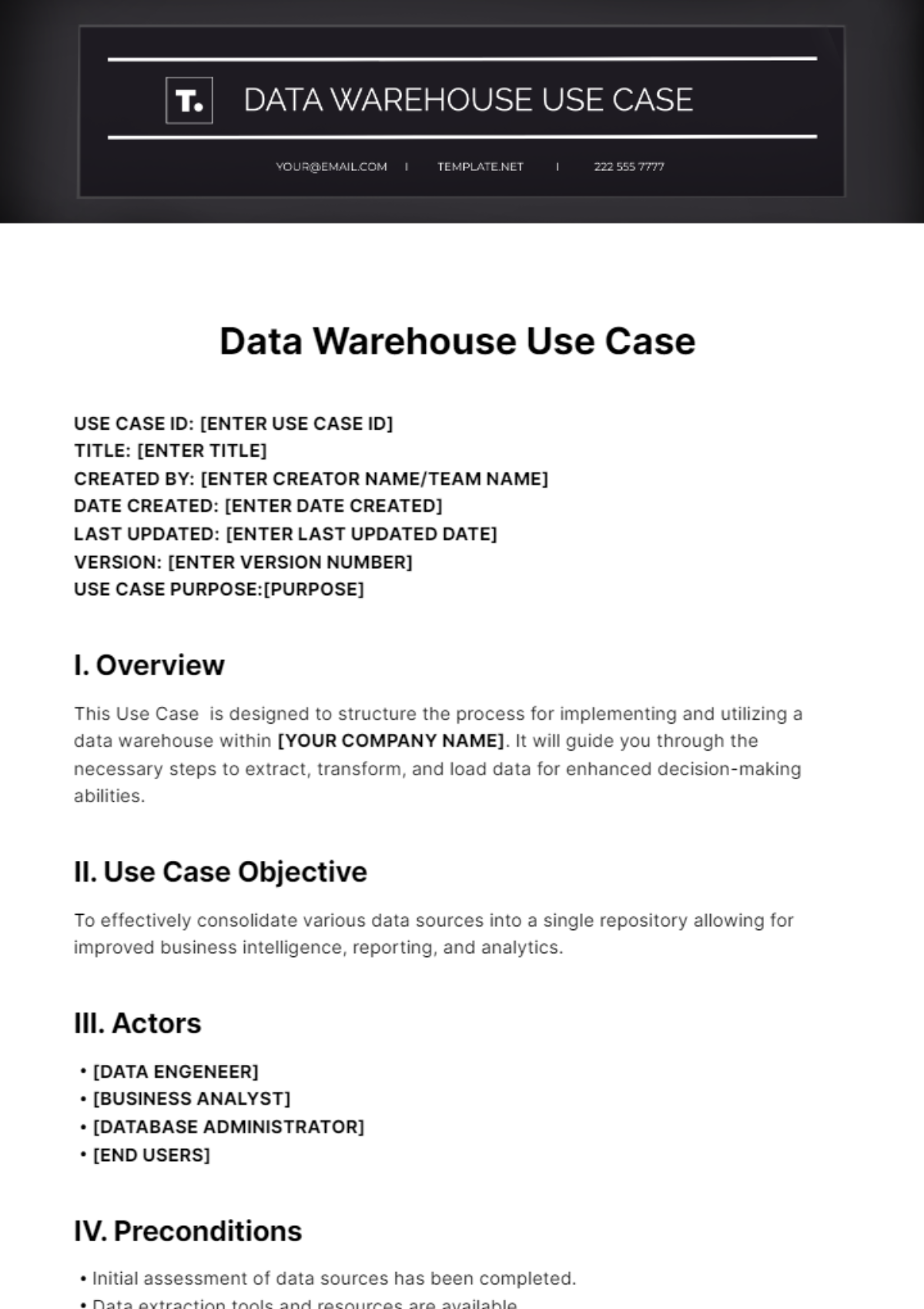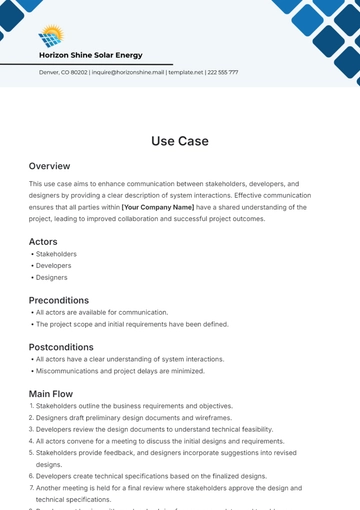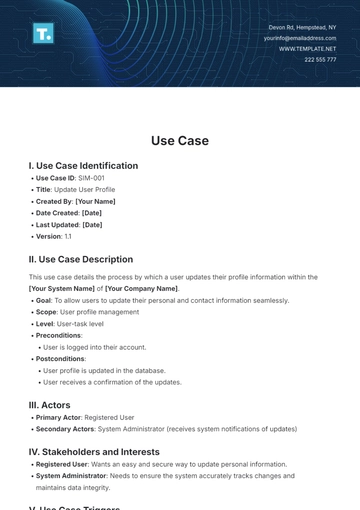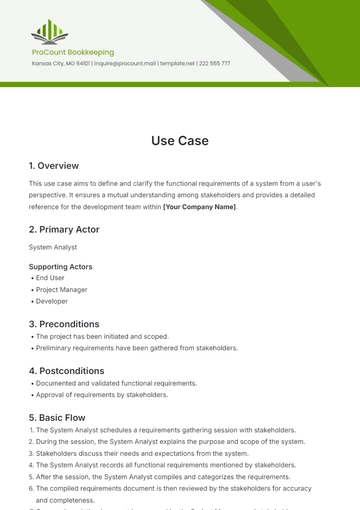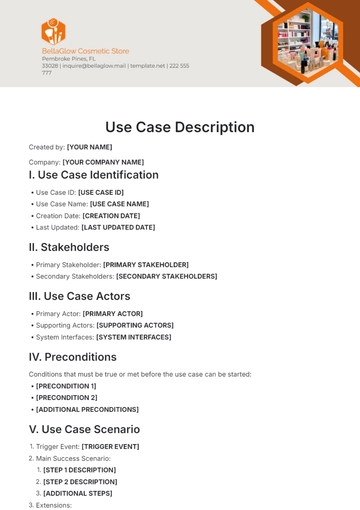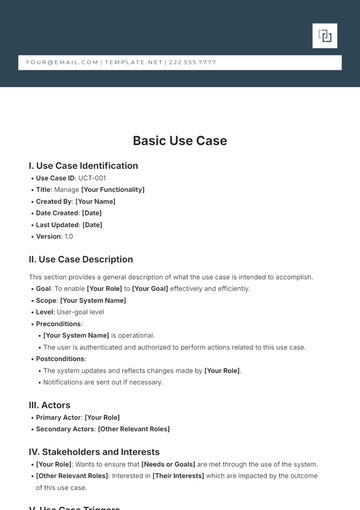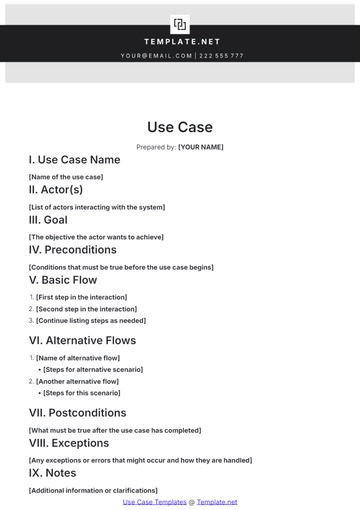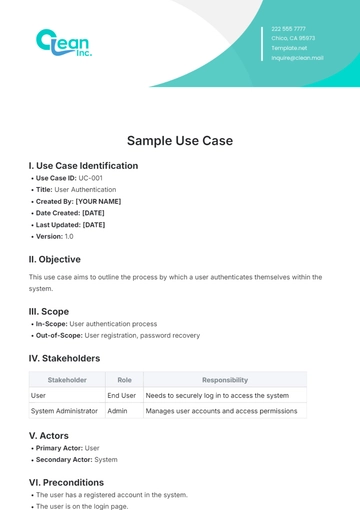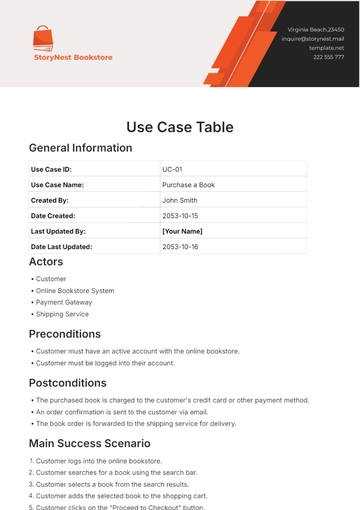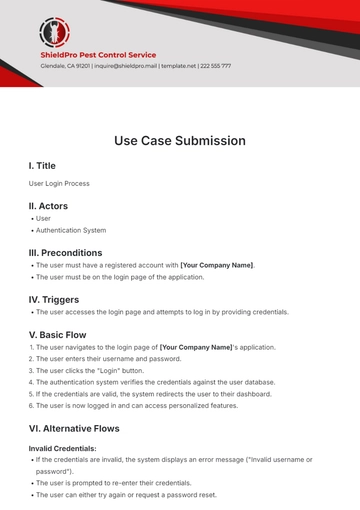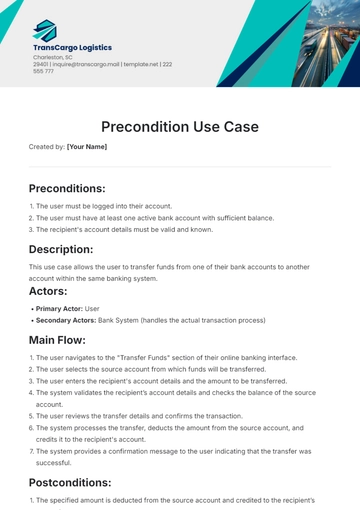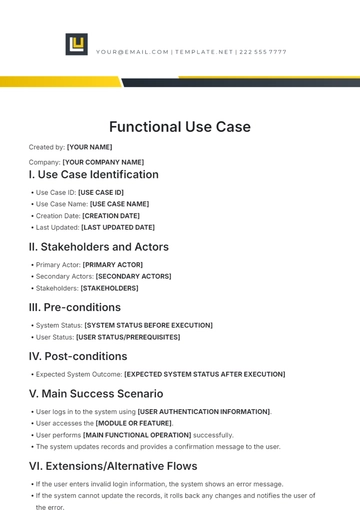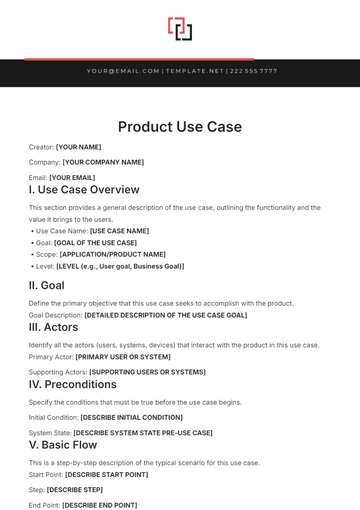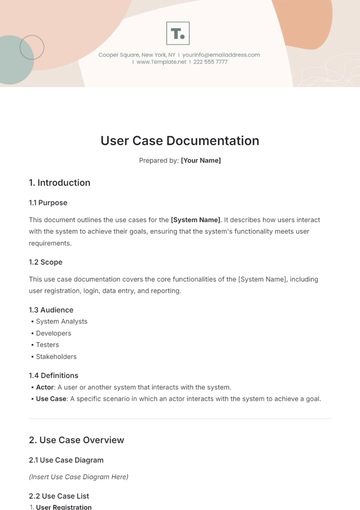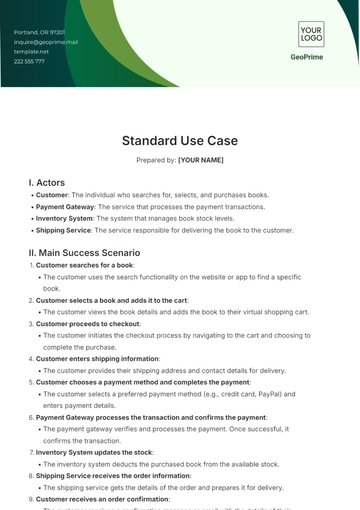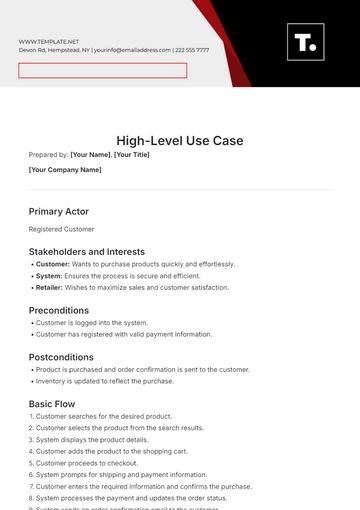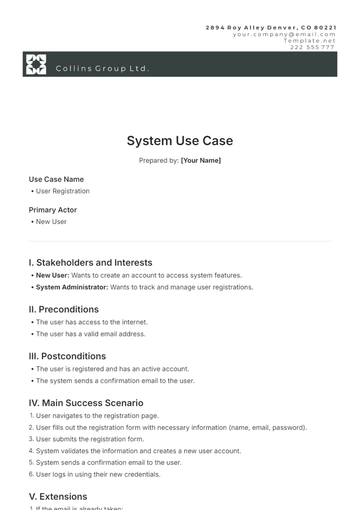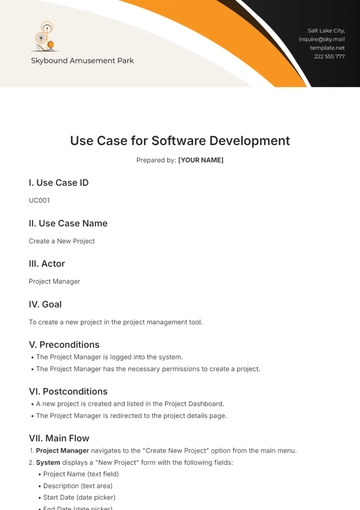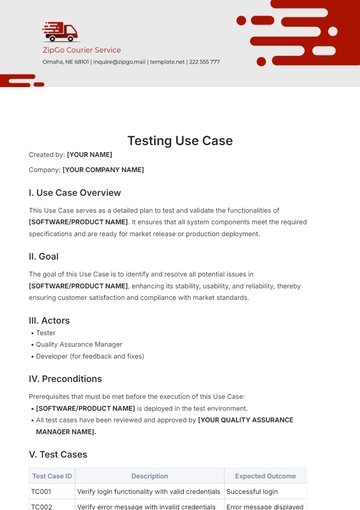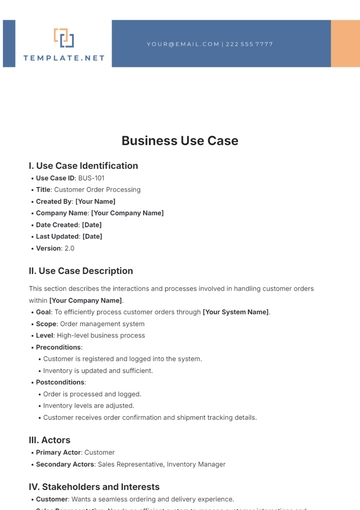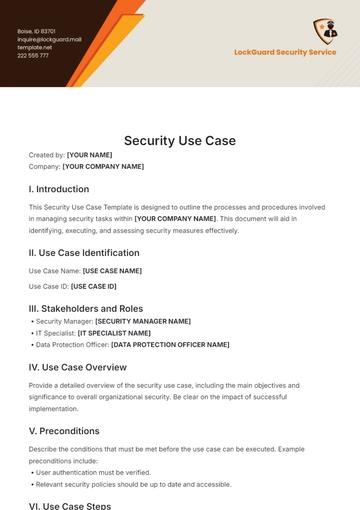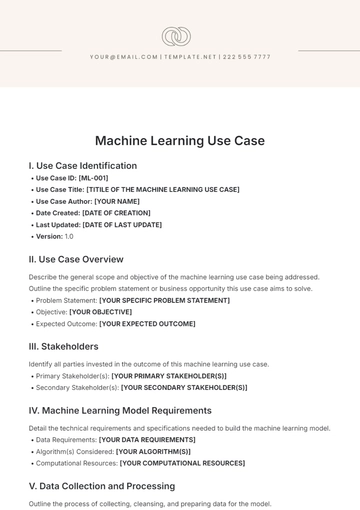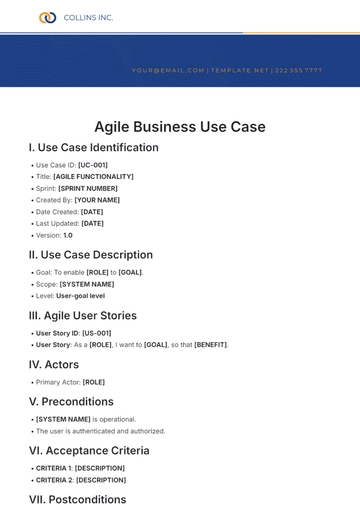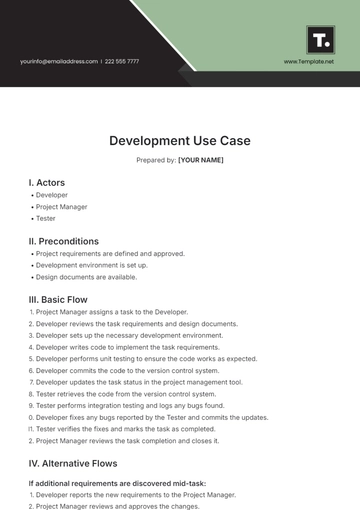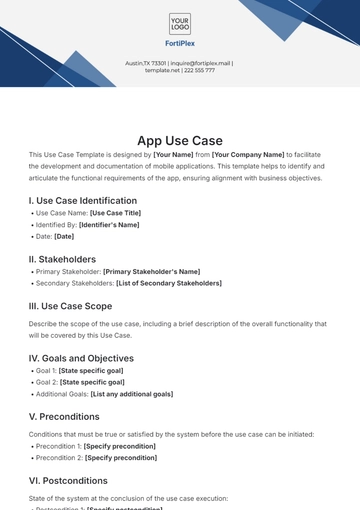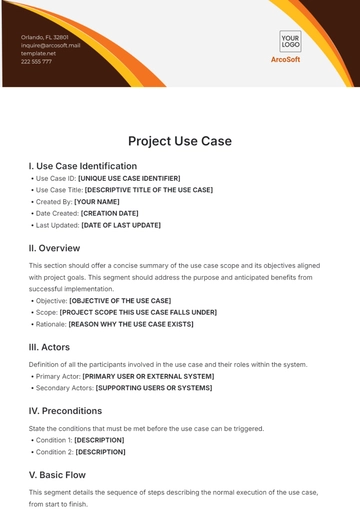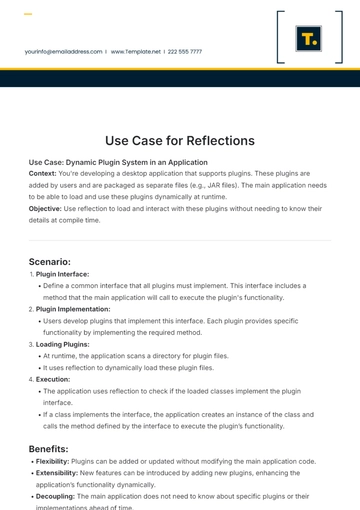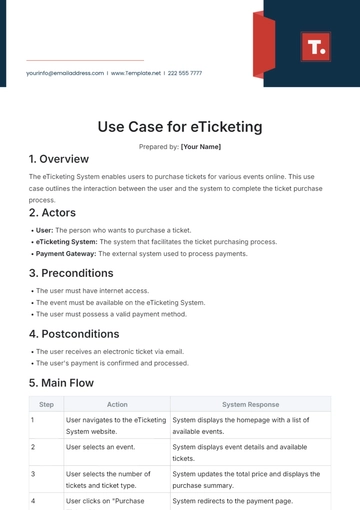Data Warehouse Use Case
USE CASE ID: [ENTER USE CASE ID]
TITLE: [ENTER TITLE]
CREATED BY: [ENTER CREATOR NAME/TEAM NAME]
DATE CREATED: [ENTER DATE CREATED]
LAST UPDATED: [ENTER LAST UPDATED DATE]
VERSION: [ENTER VERSION NUMBER]
USE CASE PURPOSE:[PURPOSE]
I. Overview
This Use Case is designed to structure the process for implementing and utilizing a data warehouse within [YOUR COMPANY NAME]. It will guide you through the necessary steps to extract, transform, and load data for enhanced decision-making abilities.
II. Use Case Objective
To effectively consolidate various data sources into a single repository allowing for improved business intelligence, reporting, and analytics.
III. Actors
[DATA ENGENEER]
[BUSINESS ANALYST]
[DATABASE ADMINISTRATOR]
[END USERS]
IV. Preconditions
Initial assessment of data sources has been completed.
Data extraction tools and resources are available.
All participating actors have been trained on their respective tasks.
V. Postconditions
Data is regularly updated and maintained in the warehouse.
Business intelligence tools are operational and providing insights.
End Users can access updated reports and dashboards.
VI. Main Success Scenario
[DATA ENGENEER]consolidates data sources.
Data is cleaned, transformed, and loaded into the warehouse.
[DATABASE ADMINISTRATOR] sets up security measures and regular backups.
[BUSINESS ANALYST] generates reports and analyses for strategic decisions.
End Users access fresh, up-to-date business intelligence.
VII. Extensions/Exceptions
If data fails to load, troubleshooting procedures are implemented.
If security protocols are breached, incident response is activated.
VIII. Quality Requirements
Data accuracy and consistency must be maintained above 99%.
System downtime should not exceed 1% of total time.
Security audits to be performed bi-annually.
IX. Technical Requirements
High-performance SQL database for data storage.
ETL tools compatible with existing data formats and sources.
Reporting tools must support real-time data access and multi-dimensional analysis.
X. Assumptions
Use Case Templates @ Template.net
